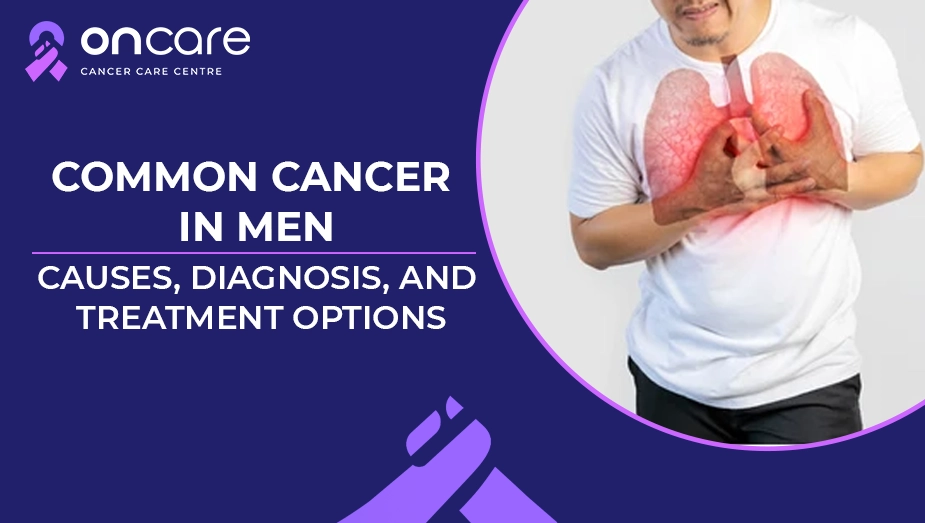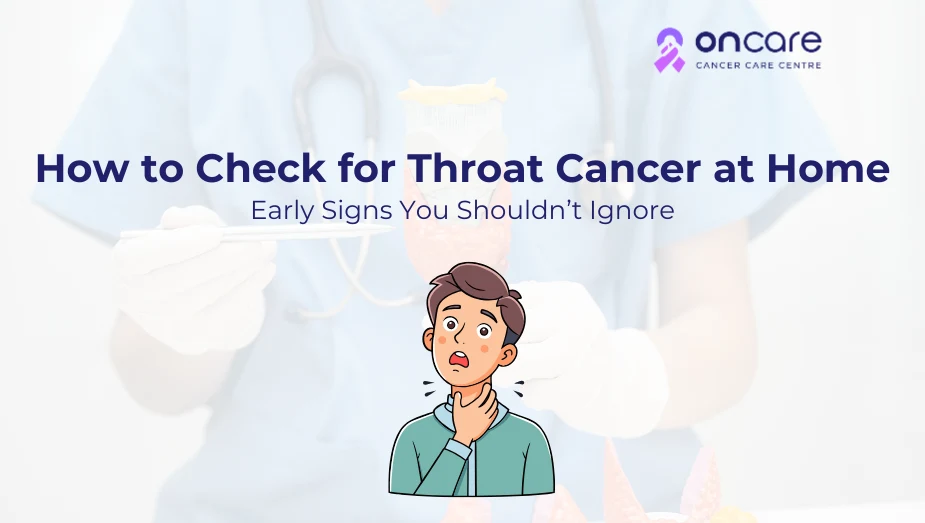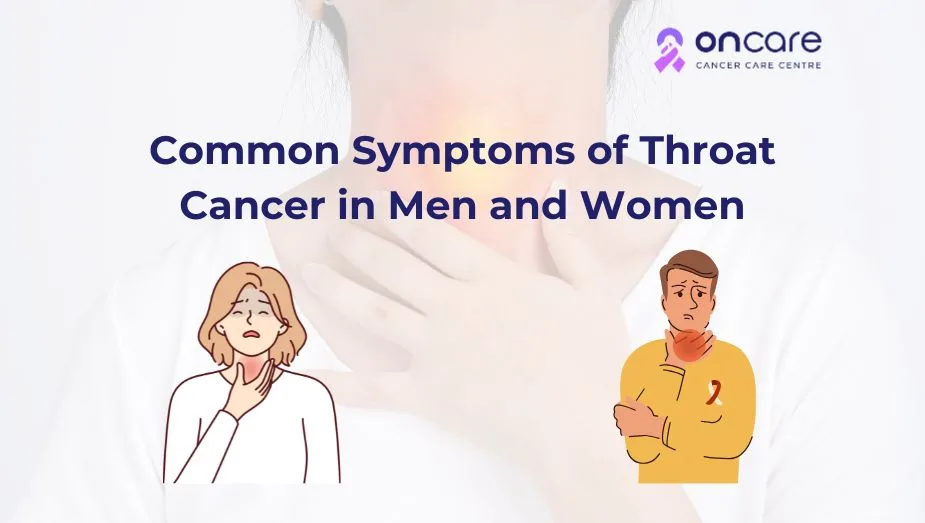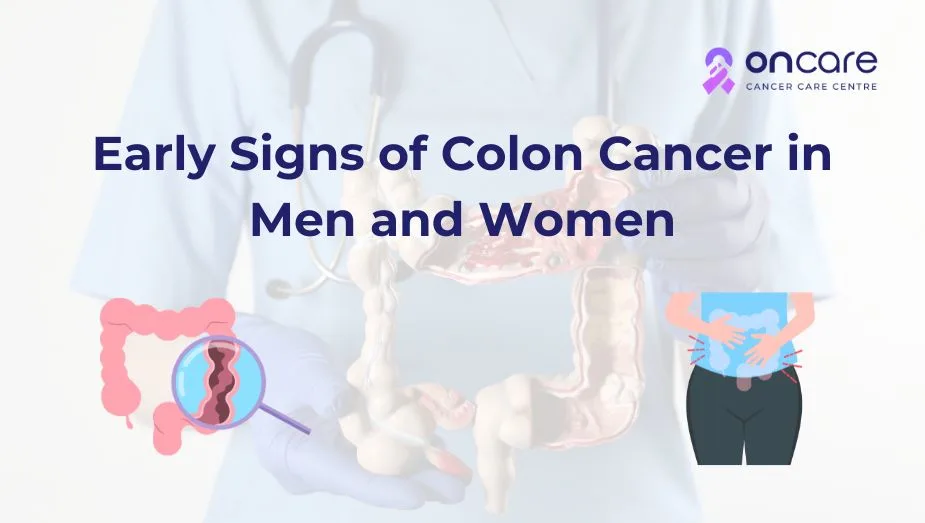Table of Contents
Common Cancer in Men: Causes, Diagnosis, and Treatment Options

Cancer is one of the significant health concerns across the world. Men face their own patterns of risk when it comes to developing cancer. Understanding the most common types of cancer in men, their causes and risk factors, what leads them to develop their diagnosis, and their treatment options! Additionally, how these treatment options help with prevention, early detection, and better treatment outcomes!
In this blog, we’ll delve more into the causes, diagnosis, and treatment options of common cancers in men!
Most common cancers in Male
The risk of cancer can vary by several factors, including a person’s lifestyle, genetics, and overall individual health conditions.
Here are some of the commonly ranked cancers among men, including:
- Lung cancer: Lung cancer is one of the leading causes of cancer death in men across India and in the world.
- Prostate cancer: These cancers are common in older men. In some countries, these are most frequently diagnosed non-skin cancer in men.
- Colorectal cancer: Cancer in the colon or rectum is another common type of cancer in men. These cancers are often driven by dietary, genetic, and lifestyle factors.
- Oral cancer: In countries like India, oral cancer is highly common in India, which is highly linked to tobacco use and smoking along with extreme alcohol consumption.
- Bladder cancer: These types of cancer are highly common in men because one of the key risk factors is smoking habits in men.
- Testicular cancer: These cancers are less common in men overall, and it tends to affect younger men, especially in the age of 15 to 25.
- Skin cancer: These cancers are highly frequent in men, especially linked to UV exposure.
Causes and risk factors
Cancer develops due to the interplay of complex interactions between genetic, environmental, and lifestyle factors.
Here are the most common causes and risk factors for the cancers listed above:
- Smoking and tobacco use: This is a leading cause of cancer, especially for lung cancer, bladder cancer, and some head and neck cancers.
- Diet and nutrition: People with diets high in processed meat, low in fiber, and high in salt and smoked foods increase the risk of colorectal and stomach cancer in men.
- Alcohol consumption: This is linked to the development of several cancers, including oral and colorectal cancer.
- Age: Many types of cancers, including prostate cancer, become more common in men.
- Genetics and family history: A family history of several cancers increases the risk of developing cancers in men. For example, certain cancers, like prostate cancers, have hereditary risk factors.
- Infections: There are chronic infections, such as Helicobacter pylori in the stomach, that can raise an increased risk of stomach cancer in men.
- Environmental factors: Pollutants, carcinogens, exposure to UV radiation, and secondhand smoke are important risk factors.
- Obesity and sedentary lifestyle: People with obesity and sedentary lifestyles can contribute to colorectal cancer risk in men.
What are the signs and symptoms to watch out for
Each type of cancer has its own signs, acting as a warning sign. Some general warning signs might come across many types, including:
- Chronic cough and cough with blood
- Changes in bowel habits
- Blood in the stool
- Trouble urinating or trouble in urine
- Non-healing mouth sores and difficulty in chewing
- Skin changes or moles that grow or change shape
Early stages of cancer often show few or less subtle symptoms; screening and regular check-ups are important.
How are these cancers detected?
Diagnosing cancer type in men or women typically involves a combination of diagnostic approaches, including:
- Imaging tests: These diagnostic tests may include CT scans, MRIs, ultrasounds, or PET scans, which are used to visualize tumors.
- Blood tests: For cancers like prostate cancers, the PSA (prostate-specific antigen) blood tests are usually used.
- Biopsy: In this test, a sample tissue is collected from the suspected area and examined under a microscope by many pathologists.
- Physical examination: Testicular cancer is often diagnosed with any type of lump or swelling self-directed by the patient.
What are the treatment options for Men’s Cancers
The treatment depends on the type of cancer, its stage, patients overall health conditions and other factors. Here are some of the general treatment modalities used in cancer treatments, including:
- Surgery
- Radiation therapy
- Chemotherapy
- Hormone therapy
- Targeted therapy
- Immunotherapy
What are preventive measures or risk reduction of cancer in males
As we all know, not all cancers can be prevented. There are many risk factors that can be modified.
Here are some of the preventive measures that reduce the risk of cancer in men, including:
- Quit smoking: Avoid the use of tobacco products, which reduce the risk of lung, bladder, and other types of cancers.
- Healthy diet: Eat plenty of fruits and vegetables, along with whole grains. Limit the consumption of processed foods and red meats.
- Exercise regularly: Practice physical activity which helps to reduce the risk of several cancers and supports overall health.
- Maintain a healthy diet: Obesity often linked to the development of many types of cancers
- Limit the consumption of alcohol: Excessive drinking of alcohol often causes liver cancer and increases the risk of several cancers.
- Sun protection: Use sunscreen and avoid the use of tanning beds.
- Regular cancer screenings: Depending on the risk factors and age, regular cancer screenings can help to identify the several cancers early.
Why early diagnosis matters
Cancers detected in the initial stages are more likely to be treatable and manageable. Early diagnosis in people often means getting less aggressive cancer treatment. It improves the overall quality of life during and after the treatment. Early detection can also reduce healthcare costs and improve the overall survival outcomes. Many studies have shown that an early diagnosis can lead to significant cost savings.
Additionally, screening and awareness is vital for men to understand the risk factors and helps to take preventive measures that are far more effective and better.
What are the challenges for men
Here are some of the challenges and barriers of men, including:
- Under-screening or neglecting to get diagnosed: Some men avoid undergoing screenings due to fear, stigma, and lack of awareness.
- Late diagnosis and presentation: Some cancers, such as prostate cancer, may not cause early symptoms; diagnosis is often delayed.
- Access to cancer care: In some areas, limited access to cancer-related treatments, oncologists, or the best hospitals can be a major challenge.
- Psychological factors: In most cases, men tend to under-prioritize their health and its symptoms, ignore symptoms, and delay seeking medical help.
- Costs: Cancer treatments are highly expensive, especially for advanced cancer or in lower-income settings.
Consult Today
Early detection of cancer should be considered a human and non-optional requirement for economic action. From a patient’s perspective, diagnosing cancer early often means better access to curative treatment, with fewer side effects and a higher chance of maintaining the overall quality of life. However, early diagnosis allows the health services to access resources effectively and reduce the need for a highly complex, advanced stage of treatments.
At Oncare, we offer premium-quality cancer treatments, including advanced cancer surgeries, at an affordable price range with an experienced cancer specialist consultation.
If you or any loved ones of yours are diagnosed with cancer, then visit Oncare Cancer Center and book an appointment with our experienced cancer specialist today! Get an estimated cost of your cancer treatment today!
Frequently Asked Questions
Ans: Here are some of the most common cancers in men, including:
- Lung cancer
- Head and neck cancers
- Prostate cancer
- Colorectal cancer
- Stomach cancer
Ans: Here are some of the 10 cancer symptoms men shouldn’t ignore, including:
- Abnormal lump
- Changes in your testicles
- Changes in the skin
- Indigestion
- Trouble swallowing
- Changes in bowel movements
- Constant cough
- Hoarseness
- Changes in your mouth
- Sudden weight loss/ Constant pain
Ans: Here are some of the risk factors for common cancer in male in India, including:
- Tobacco use
- Alcohol consumption
- Diet and lifestyle
- Genetics
- Environmental factors
- Infections
Book an Appointment
Related Blogs

How to Check for Throat Cancer at Home: Early Signs You Shouldn’t Ignore
Discover more about how to identify the early signs of Throat cancer at home, and its symptoms and risk factors and how to prevent throat cancer and when to consult a doctor!

Biopsy Test for Cancer: Why It’s Done and How It Helps in Diagnosis
Discover more about biopsy tests for cancer diagnosis, why biopsy tests are performed and how biopsy helps in a cancer diagnosis, types of cancer that require biopsy!

Common Symptoms of Throat Cancer in Men and Women
Discover more about the symptoms of throat cancer in men and women, how this cancer is diagnosed in men and women, and its causes, risk factors, and treatments!

Biopsy Test Price: What You Need to Know Before Booking
Discover more about the average biopsy test price and the factors influencing the average cost of a biopsy, and why you should choose Oncare for your biopsy tests!

Early Signs of Colon Cancer in Men and Women
Learn more about colon cancer, its early signs of colon cancer in both men and women, and the causes of colon cancer, risk factors, symptoms, and prevention tips!

